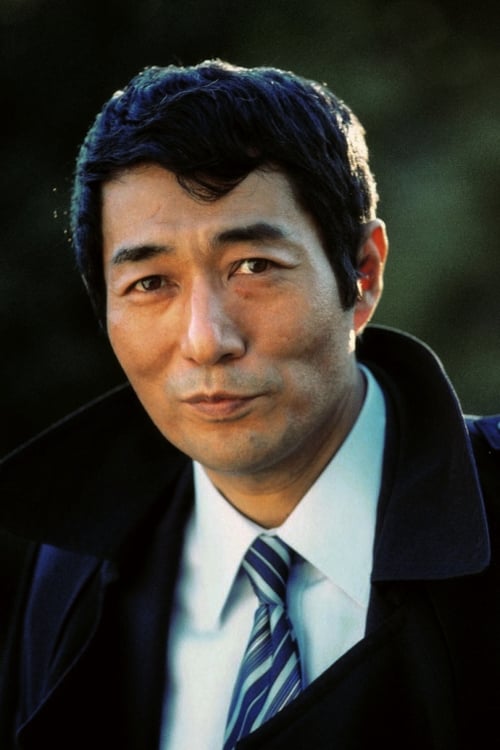
Shūji Terayama
출생 : 1935-12-10, Aomori, Japan
사망 : 1983-05-04
약력
From Wikipedia, the free encyclopedia.
Shūji Terayama (December 10, 1935 – May 4, 1983) was an avant-garde Japanese poet, dramatist, writer, film director, and photographer. According to many critics and supporters, he was one of the most productive and provocative creative artists to come out of Japan. He was born December 10, 1935, the only son of Hachiro and Hatsu Terayama in Hirosaki city in the northern Japanese prefecture of Aomori. His father died at the end of Pacific War in Indonesia in September 1945. At the age of nine, his mother moved to Kyūshū to work at an American military base while he himself went to live with relatives in the city of Misawa, also in Aomori. At this same time, Terayama lived through the Aomori air raids that killed more than 30,000 people.
Terayama entered Aomori Prefectural Aomori High School in 1951, and in 1954 went to prestigious Waseda University's Faculty of Education to study Japanese language and literature. However, he soon dropped out because he fell ill with nephrotic syndrome. He received his education through working in bars in Shinjuku. His oeuvre includes a number of essays claiming that more can be learned about life through boxing and horse racing than by attending school and studying hard. Accordingly, he was one of the central figures of the "runaway" movement in Japan in the late 1960s, as depicted in his book, play, and film "Throw Away Your Books, Run into the Streets!
In 1967, Terayama formed the Tenjō Sajiki theater troupe, whose name comes from the Japanese translation of the 1945 Marcel Carné film "Les Enfants du Paradis", so can be translated as "children of heaven", however its correct translation is "Ceiling Gallery" and has a meaning similar to the English expression "Peanut Gallery". The troupe was dedicated to the avant-garde and staged a number of controversial plays tackling social issues from an iconoclastic perspective. Some major plays include "Bluebeard", "Yes", and "The Crime of Fatso Oyama", among others. Also involved with the theater were artists Aquirax Uno and Tadanori Yokoo, who designed many of the advertisement posters for the group. Musically, he worked closely with experimental composer J.A. Seazer and folk musician Kan Mikami.
He was also involved in poetry and at 18 was the second winner of the Tanka Studies Award.
Terayama experimented with ‘city plays’, a fantastical satire of civic life.
Also in 1967, Terayama started an experimental cinema and gallery called 'Universal Gravitation,' which is in fact still in existence at Misawa as a resource center. The Terayama Shūji Memorial Hall, which has a large collection of his plays, novels, poetry, photography and a great number of his personal effects and relics from his theatre productions, can also be found in Misawa. In 1976, he was a member of the jury at the 26th Berlin International Film Festival.
Terayama published almost 200 literary works, and over 20 short and full-length films.
He was married to Tenjō Sajiki co-founder Kyōko Kujō, but they later divorced, although they continued to work together until Terayama's death on May 4, 1983 from cirrhosis of the liver.
Description above from the Wikipedia article Shūji Terayama, licensed under CC-BY-SA, full list of contributors on Wikipedia
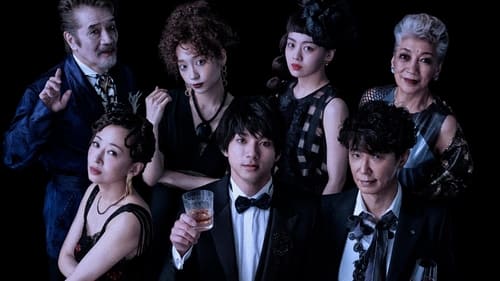
Creator

Himself (archive footage)
The documentary to find the "true Shuji Terayama".
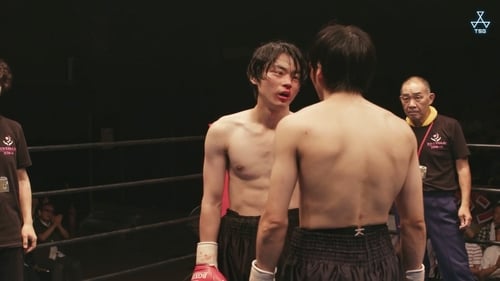
Novel
복수를 위해 권투를 시작한 신지는 계속되는 경기에서 실력을 키워가게 되고, 켄지는 그런 신지를 보며 특별한 감정을 가지게 된다. 유우지와의 경기가 가까워 질수록 열의를 불태우는 신지, 한편 바리깡 켄지도 큰 결정을 하게 되는데...
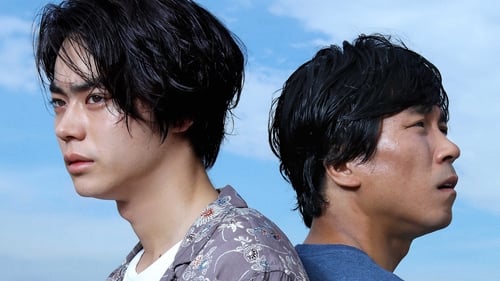
Novel
소년원 출신의 신지는 원한 관계에 있던 유우지가 권투 선수가 되었음을 알고 링 위에서 붙기 위해 오션 권투 클럽의 제의로 권투를 시작한다. 같은 시기 말더듬이 켄지 또한 아버지의 오랜 학대를 견디지 못하고 권투를 시작하게 되고, 두 사람은 숙식을 같이 하며 우정을 쌓아간다. 유우지를 해치우겠다는 일념으로 공격적인 권투를 선보이는 신지와 달리, 남을 미워하는 일에 익숙하지 않은 켄지는 고전을 면치 못하는데…
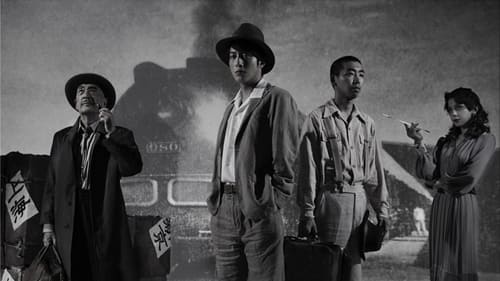
Writer
Yukichi Matsumoto's 2013 stage adaptation of Shuji Terayama's "Lemmings". Two cooks share a room, one of which talks with his mother's head: it lives beneath their tatami mats. On the other side of their room's wall, lives a wife who desperately cares for her feverish husband. As more and more walls are tore down movie studios, hospitals and prisons are revealed, destroying the physical boundaries between their boarding house and the city.

Original Story
He pulls out a pair of scissors that tends toward the sky. So begins his journey through time, space and memory. Seasons change, years pass. Wrapped in a mysterious box of sunset, the boy grows older, becomes adolescent, young man, adult, old, but - strangely - the memories are beginning to lead their own lives. "What memory, what reverie, what is real and what is imaginary? I do not know ... "

Director
This four-volume boxset released by Image Forum compiles the breadth of Shuji Terayama's experimental short film work into an extensive DVD collection. Originally released by Image Forum on VHS in 1995, this upgraded DVD boxset stands as the definitive collection for Terayama's experimental work in the highest quality possible.
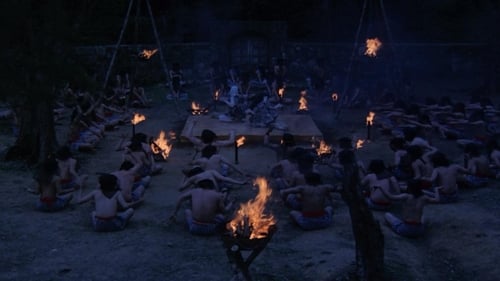
Screenplay
A surreal, isolated village sees its inhabitants gradually leave behind their mutual traditions and superstitions as they leave for the city. Among them are two cousins who love each other and who get into a quarrel with other villagers.

Director
A surreal, isolated village sees its inhabitants gradually leave behind their mutual traditions and superstitions as they leave for the city. Among them are two cousins who love each other and who get into a quarrel with other villagers.

Writer
Lacking a coherent plot, We're All Riding on a Circus Elephant depicts the collapse of western civilization as a free-form collage advocating group anarchy and actor improvisation. The stage is a boxing ring. Those actors who are "onstage" get into the boxing ring and assault each other with words. Others heckle and cheer at the sidelines, or act as a rhythm-and-blues chorus while changing costumes or wigs. Taking as its coda Andy Warhol's dictum that everyone gets fifteen minutes of fame, actor transformations depict the Breakdown of Japanese values and selfhood due to an obsession with popular American culture.

Editor
This remarkable compilation follows an exchange of video letters that took place between Shuji Terayama and Shuntaro Tanikawa in the months immediately preceding Terayama's death. It can be thought of as a home video produced by two preeminent poets and inter-laid with highly abstract philosophizing, slightly aberrant behavior and occasionally flamboyant visuals.

Cinematography
This remarkable compilation follows an exchange of video letters that took place between Shuji Terayama and Shuntaro Tanikawa in the months immediately preceding Terayama's death. It can be thought of as a home video produced by two preeminent poets and inter-laid with highly abstract philosophizing, slightly aberrant behavior and occasionally flamboyant visuals.

Writer
This is Shuji Terayama memorial performance of The Hunchback of Aomori from 1983 (featuring Akihiro Miwa). Terayama gathered dwarfs, circus freaks, itinerant magicians, acrobats and untrained youth for his burgeoning troupe, Tenjo Sajiki. The troupe's premiere offering, written and directed by Terayama, was Aomori-ken no Semushi Otoko (The Hunchback of Aomori, 1967).

Writer
"La Marie-Vison" tells the perversely fascinating tale of Marie, a transvestite prostitute who lives in elegant squalor with her dedicated servant. Every day, for eighteen years, Marie releases an exotic butterfly into the open fields of the living room. Every day for eighteen years the beautiful boy, imprisoned in her den, catches and kills it. The beautiful boy is tempted with visions of the outside world, free from the wiles of wicked Marie, but maybe the boy wasn't made for the outside world. Maybe none of us were.

Writer
This is Shuji Terayama memorial performance from 1983.

Writer
This remarkable compilation follows an exchange of video letters that took place between Shuji Terayama and Shuntaro Tanikawa in the months immediately preceding Terayama's death. It can be thought of as a home video produced by two preeminent poets and inter-laid with highly abstract philosophizing, slightly aberrant behavior and occasionally flamboyant visuals.

Director
This remarkable compilation follows an exchange of video letters that took place between Shuji Terayama and Shuntaro Tanikawa in the months immediately preceding Terayama's death. It can be thought of as a home video produced by two preeminent poets and inter-laid with highly abstract philosophizing, slightly aberrant behavior and occasionally flamboyant visuals.

Self
This remarkable compilation follows an exchange of video letters that took place between Shuji Terayama and Shuntaro Tanikawa in the months immediately preceding Terayama's death. It can be thought of as a home video produced by two preeminent poets and inter-laid with highly abstract philosophizing, slightly aberrant behavior and occasionally flamboyant visuals.

Director
This is Shuji Terayama memorial performance from 1983.
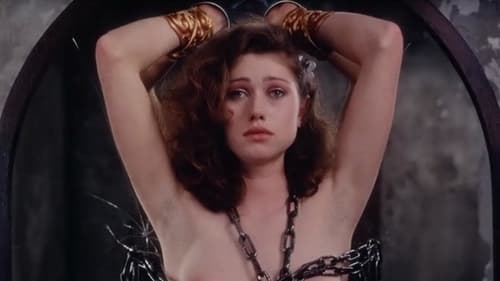
Writer
Pauline Reage의 소설 「O양 이야기」의 속편을 원작으로 한 이 영화는 1920년대 중국을 배경으로 “O”라는 여인과 스티븐 경과의 도착적인 사랑을 그렸다. 상하이에서 카지노를 소유하고 있는 스티븐 경은 반체제 운동가들을 위해 자금을 지원하기도 한다. 하지만 가학적인 사랑을 즐기는 그는, 자기와 사랑에 빠진 그의 애인의 자신에 대한 사랑을 증명하기 위한 일종의 게임으로 “O”를 사창가로 보낸다.
영화제 소개글. 영화는 한 명의 소녀가 “O”라는 창부가 되는 곳에서 시작한다. 무대는 1928년 홍콩, 한 소녀가 스테판 유에게 이끌려 창관인 “춘모루”로 간다. 그녀는 두 사람의 사랑을 확인하기 위해 창부가 되는 것이다. 여주인은 소녀를 발가벗기고 화장을 시킨 후 말한다. “너의 몸은 이미 손님의 것, 마음대로 씻거나, 더럽혀서는 안 된다”. 그리고 소녀는 점점 “O”가 되어 가고 영화는 처음부터 하드 코어가 아니라 점점 하드 코어로 되어 간다. 이 영화는 폴린 레아주 “O의 이야기”를 원작으로 하고 있다. 테라야마 감독의 작품 중 이 파리에서 개봉 된 후 호평을 받고, 알랑 레네 감독의 , 오시마 나기사 감독의 을 제작했던 프로듀서 아나톨 도망이 그에게 이 영화를 제의했다. 프로듀서로부터의 제안은 하드코어 영화로서 크게 히트시키고 싶다는 것이었다. 이에 테라야마는 설정을 1920년대 중국으로 하여 원작에서 주요 등장 인물의 이름만 남기고, 스테판 유 역은 친구인 클라우스 킨스키를 기용하여 찍게 된다.(윤용순)

Director
Pauline Reage의 소설 「O양 이야기」의 속편을 원작으로 한 이 영화는 1920년대 중국을 배경으로 “O”라는 여인과 스티븐 경과의 도착적인 사랑을 그렸다. 상하이에서 카지노를 소유하고 있는 스티븐 경은 반체제 운동가들을 위해 자금을 지원하기도 한다. 하지만 가학적인 사랑을 즐기는 그는, 자기와 사랑에 빠진 그의 애인의 자신에 대한 사랑을 증명하기 위한 일종의 게임으로 “O”를 사창가로 보낸다.
영화제 소개글. 영화는 한 명의 소녀가 “O”라는 창부가 되는 곳에서 시작한다. 무대는 1928년 홍콩, 한 소녀가 스테판 유에게 이끌려 창관인 “춘모루”로 간다. 그녀는 두 사람의 사랑을 확인하기 위해 창부가 되는 것이다. 여주인은 소녀를 발가벗기고 화장을 시킨 후 말한다. “너의 몸은 이미 손님의 것, 마음대로 씻거나, 더럽혀서는 안 된다”. 그리고 소녀는 점점 “O”가 되어 가고 영화는 처음부터 하드 코어가 아니라 점점 하드 코어로 되어 간다. 이 영화는 폴린 레아주 “O의 이야기”를 원작으로 하고 있다. 테라야마 감독의 작품 중 이 파리에서 개봉 된 후 호평을 받고, 알랑 레네 감독의 , 오시마 나기사 감독의 을 제작했던 프로듀서 아나톨 도망이 그에게 이 영화를 제의했다. 프로듀서로부터의 제안은 하드코어 영화로서 크게 히트시키고 싶다는 것이었다. 이에 테라야마는 설정을 1920년대 중국으로 하여 원작에서 주요 등장 인물의 이름만 남기고, 스테판 유 역은 친구인 클라우스 킨스키를 기용하여 찍게 된다.(윤용순)

Director
This sumptuous-yet-austere liberal re-working of Cien años de soledad by Gabriel García Márquez, arranged on a five-part stage surrounded by the audience, was historically the latest production of Tenjo Sajiki.
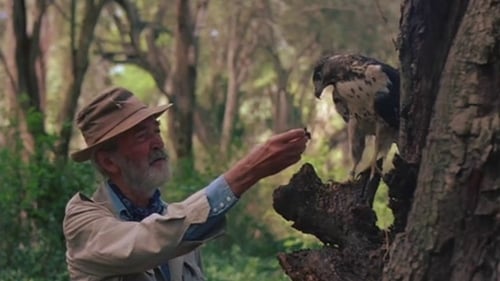
Writer
A pilot crash-lands in the African wilds, and loses his memory. He finds an old man living in the jungle with his grand-daughter. He falls in love with the young girl and settles down happily with them; their idyllic life broken only by a visit from his long forgotten fiancee.

Screenplay
Three stories. A solitary sailor falls from his boat and washes ashore on a tropical island. While seeking rescue, he's found by a nearly naked woman who is playful and compliant. He decides to erase his signs of distress and remain on the island. What awaits? In the second, an adolescent searches for the words of a nursery rime he remembers bits of. His journey takes him into dreams, sexual awakening, and Oedipal fantasy. Third, a man of wealth in late-nineteenth century Paris hires a prostitute for the night. She's also cabaret performer and takes him to her room. He fears he's about to be robbed. What's her secret?

Director
Three stories. A solitary sailor falls from his boat and washes ashore on a tropical island. While seeking rescue, he's found by a nearly naked woman who is playful and compliant. He decides to erase his signs of distress and remain on the island. What awaits? In the second, an adolescent searches for the words of a nursery rime he remembers bits of. His journey takes him into dreams, sexual awakening, and Oedipal fantasy. Third, a man of wealth in late-nineteenth century Paris hires a prostitute for the night. She's also cabaret performer and takes him to her room. He fears he's about to be robbed. What's her secret?

Writer
아키라(明)는 죽은 어머니가 흥얼거리던 노래의 가사를 찾아 여행하고 있다. 소년은 교장이나 승려를 찾아가 가르침을 청하기도 한다. 소년이 여행 중에 생각하는 것은 죽은 어머니에 대한 일뿐이었다. 소년의 집 뒤편에 있는 토담 창고에는 지요조(千代女)라는 미친 여자가 살고 있는데, 소년이 그녀 가까이 가면 어머니가 호되게 꾸짖곤 했다. 항간의 소문에 의하면, 그녀는 아버지가 좋아했던 식모라고 한다. 어머니는 그런 사실을 알고 화가 나, 그녀를 10년 동안이나 창고에 가두고 있다는 것이다. 어느 날 아키라는 공놀이를 하는 아름다운 소녀를 만나, 그녀를 뒤쫓아간다. 그러다가 한 저택에 들어서게 되는데, 그곳에서 요괴들이 공놀이를 하고 있다. 그 크고 작은 공들 중에는 어머니의 머리도 끼어 있다. 그리고 어느새 무대는 아키라의 장례식으로 변한다. 그것은 꿈이었다. 아키라는 다시 여행을 떠나는데……

Director
아키라(明)는 죽은 어머니가 흥얼거리던 노래의 가사를 찾아 여행하고 있다. 소년은 교장이나 승려를 찾아가 가르침을 청하기도 한다. 소년이 여행 중에 생각하는 것은 죽은 어머니에 대한 일뿐이었다. 소년의 집 뒤편에 있는 토담 창고에는 지요조(千代女)라는 미친 여자가 살고 있는데, 소년이 그녀 가까이 가면 어머니가 호되게 꾸짖곤 했다. 항간의 소문에 의하면, 그녀는 아버지가 좋아했던 식모라고 한다. 어머니는 그런 사실을 알고 화가 나, 그녀를 10년 동안이나 창고에 가두고 있다는 것이다. 어느 날 아키라는 공놀이를 하는 아름다운 소녀를 만나, 그녀를 뒤쫓아간다. 그러다가 한 저택에 들어서게 되는데, 그곳에서 요괴들이 공놀이를 하고 있다. 그 크고 작은 공들 중에는 어머니의 머리도 끼어 있다. 그리고 어느새 무대는 아키라의 장례식으로 변한다. 그것은 꿈이었다. 아키라는 다시 여행을 떠나는데……
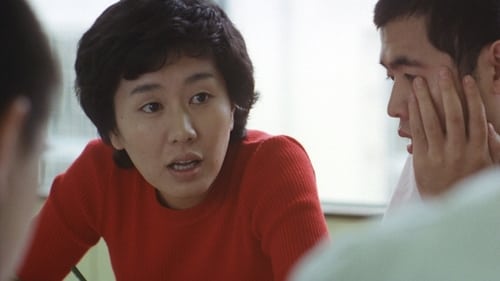
Writer
Third and Shinbunbu embark on a plan to make money by Third becoming a pimp and Shinbunbu a prostitute.

Writer
Stage performance by the Tenjo Sajiki troupe.

Writer
Shuji Terayama and J.A.Seazer's phantasmagoric folk-psych-symph-prog-rock opera. Historical Tenjo Sajiki performance from 1978.

Director
Shuji Terayama and J.A.Seazer's phantasmagoric folk-psych-symph-prog-rock opera. Historical Tenjo Sajiki performance from 1978.

Director
Stage performance by the Tenjo Sajiki troupe.
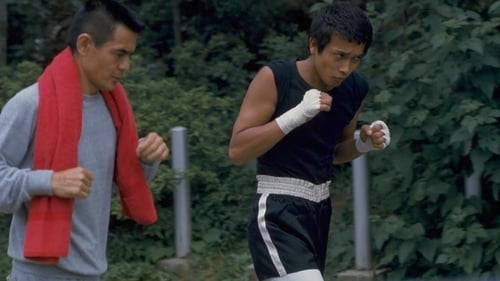
Screenplay
In the midst of a match, a successful boxer - Hayato, has had enough of the sport. He lets himself get knocked, quits boxing, leaving his wife and start living alone with his mangy dog. One day a young mediocre boxer knocks at the door and wants to be Hayatos apprentice.

Director
In the midst of a match, a successful boxer - Hayato, has had enough of the sport. He lets himself get knocked, quits boxing, leaving his wife and start living alone with his mangy dog. One day a young mediocre boxer knocks at the door and wants to be Hayatos apprentice.

himself
1977 short featuring Shuji Terayama
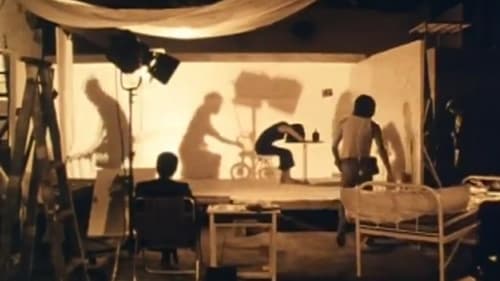
Screenplay
As a family goes on with their day, the shadows on their walls lead a completely different life.

Director
As a family goes on with their day, the shadows on their walls lead a completely different life.

Screenplay
Visions of characters by the seaside from one's memory are erased by the filmmaker's hand.

Director
Visions of characters by the seaside from one's memory are erased by the filmmaker's hand.

Writer
A “reading film” of delirious image and text, Les chants de Maldoror takes its title and inspiration from Comte de Lautréamont’s 1869 proto-Surrealist poetic novel which, for instance, describes beauty as the chance encounter of a sewing machine and an umbrella on an operating table. In the novel’s six cantos, a young misanthrope indulges in depraved and destructive acts. Unexpected encounters abound, with turtles and birds joining Terayama’s regular cast of snails and dogs to wander over books and bare torsos. Feverish video processing posterizes, inverts and overlays images that are further colored by sound—pushing the limits of his literary adaptation. Terayama wrote that the only tombstone he wanted was his words, but, as Les chants de Maldoror demonstrates, words need not be confined to carved monuments or bound hardcopies.

Director
A naval officer makes love to his wife while his son, the director of the film, watches them.

Screenplay
In this Borgesian satire on knowledge and technology, bibliophilic desire leads to the construction of a pedal-powered reading machine. Resembling a combination of gymnastic contraption, printing press and early cinematic apparatus, the machine’s purpose remains ambiguous. And like this machine, Terayama’s film connects his work in poetry, motion picture and graphic design by weaving together printed and projected, still and moving images.

Director
In this Borgesian satire on knowledge and technology, bibliophilic desire leads to the construction of a pedal-powered reading machine. Resembling a combination of gymnastic contraption, printing press and early cinematic apparatus, the machine’s purpose remains ambiguous. And like this machine, Terayama’s film connects his work in poetry, motion picture and graphic design by weaving together printed and projected, still and moving images.

Screenplay
Using bluescreen video techniques, Terayama playfully—and with a silent film theatricality—posits a series of postmodern vignettes featuring realities-within-realities as his protagonist attempts some kind of relationship with a nude woman on the screen-within-the-screen. In his struggles to “free” her, he exposes the absurd flimsiness, deceptiveness and mutability of both the cinema experience and our human dimension.

Director
Using bluescreen video techniques, Terayama playfully—and with a silent film theatricality—posits a series of postmodern vignettes featuring realities-within-realities as his protagonist attempts some kind of relationship with a nude woman on the screen-within-the-screen. In his struggles to “free” her, he exposes the absurd flimsiness, deceptiveness and mutability of both the cinema experience and our human dimension.

Director
A “reading film” of delirious image and text, Les chants de Maldoror takes its title and inspiration from Comte de Lautréamont’s 1869 proto-Surrealist poetic novel which, for instance, describes beauty as the chance encounter of a sewing machine and an umbrella on an operating table. In the novel’s six cantos, a young misanthrope indulges in depraved and destructive acts. Unexpected encounters abound, with turtles and birds joining Terayama’s regular cast of snails and dogs to wander over books and bare torsos. Feverish video processing posterizes, inverts and overlays images that are further colored by sound—pushing the limits of his literary adaptation. Terayama wrote that the only tombstone he wanted was his words, but, as Les chants de Maldoror demonstrates, words need not be confined to carved monuments or bound hardcopies.

Screenplay
An experimental short featuring people and nails.

Director
An experimental short featuring people and nails.

Script
Experimental short film about two men carrying a door.

Director
Experimental short film about two men carrying a door.

Screenplay
The smallpox virus has created its own unique atmosphere in Terayama’s film where the skin of a bandaged adolescent and the surface of the filmic image are subjected to a bizarre ‘disturbance’ as snails cross the screen and nails are hammered into the skull of the ailing patient. Illness in this film is as much a psychic entity as a physical one and manifests itself in an array of theatrical tableaux from grotesque women rigorously brushing their teeth to a snooker game where the players in white face makeup behave like automata. A Tale of Smallpox uses a medical theme to chart the traumatic dream life of Terayama’s times, evincing deep-rooted concerns in the Japanese national psyche that hark back to the upheaval of Meiji modernisation and the devastation of World War Two.

Director
The smallpox virus has created its own unique atmosphere in Terayama’s film where the skin of a bandaged adolescent and the surface of the filmic image are subjected to a bizarre ‘disturbance’ as snails cross the screen and nails are hammered into the skull of the ailing patient. Illness in this film is as much a psychic entity as a physical one and manifests itself in an array of theatrical tableaux from grotesque women rigorously brushing their teeth to a snooker game where the players in white face makeup behave like automata. A Tale of Smallpox uses a medical theme to chart the traumatic dream life of Terayama’s times, evincing deep-rooted concerns in the Japanese national psyche that hark back to the upheaval of Meiji modernisation and the devastation of World War Two.

Producer
낯선 카니발풍의 마을을 배경으로 한 어린 소년들의 성년 이야기는 감독이 20년 후에 가지고 있는 추억의 재창조가 된다.

Writer
낯선 카니발풍의 마을을 배경으로 한 어린 소년들의 성년 이야기는 감독이 20년 후에 가지고 있는 추억의 재창조가 된다.

Director
낯선 카니발풍의 마을을 배경으로 한 어린 소년들의 성년 이야기는 감독이 20년 후에 가지고 있는 추억의 재창조가 된다.

Writer
A dreamlike portrayal of a hangover after a decadent party.

Director
A dreamlike portrayal of a hangover after a decadent party.

Director
Three showgirls playfully mock the audience for attending a projection of an art film.

Screenplay
Originally made for the 100 Feet Film Festival hosted by Image Forum. However, to test the limits, Terayama Shūji willfully made use of 3 projectors to project 300 feet of film at the same time.

Director
Originally made for the 100 Feet Film Festival hosted by Image Forum. However, to test the limits, Terayama Shūji willfully made use of 3 projectors to project 300 feet of film at the same time.

Himself
Shûji Terayama's commercial for the Japanese Racing Association.

Director
Shûji Terayama's commercial for the Japanese Racing Association.
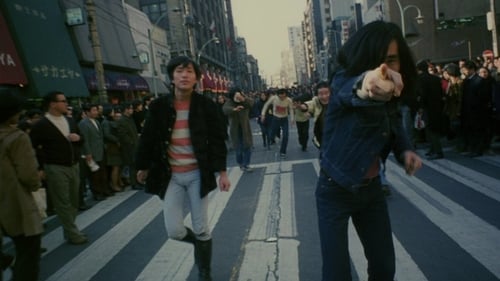
Producer
마사루는 날아다니는 몽상에 잠기는 것이 취미다. 그를 제외한 그의 다른 가족 구성원들은 사회적으로나 경제적으로 자신이 처한 운명에 순종하며 살아간다. 반면 새로움을 꿈꾸는 마사루는 자신이 처한 상황에서 벗어나기 위해 안간힘을 쓴다. 하지만 대신 그가 얻는 것은 자신의 삶과 세계에 대한 크나큰 환멸뿐이다.

Writer
마사루는 날아다니는 몽상에 잠기는 것이 취미다. 그를 제외한 그의 다른 가족 구성원들은 사회적으로나 경제적으로 자신이 처한 운명에 순종하며 살아간다. 반면 새로움을 꿈꾸는 마사루는 자신이 처한 상황에서 벗어나기 위해 안간힘을 쓴다. 하지만 대신 그가 얻는 것은 자신의 삶과 세계에 대한 크나큰 환멸뿐이다.

Director
마사루는 날아다니는 몽상에 잠기는 것이 취미다. 그를 제외한 그의 다른 가족 구성원들은 사회적으로나 경제적으로 자신이 처한 운명에 순종하며 살아간다. 반면 새로움을 꿈꾸는 마사루는 자신이 처한 상황에서 벗어나기 위해 안간힘을 쓴다. 하지만 대신 그가 얻는 것은 자신의 삶과 세계에 대한 크나큰 환멸뿐이다.

Writer
Paper-Scissor-Rock wars draws an episode where the two generals portray the Second World War, mostly through the rock-scissors-bag, but also by some absurd torture techniques that bring to mind some sort of Japanese artificial 70s jack ass. To the sound of classical music, birds chirping and Nazi incendiary speeches travels generals, ever contestant in the seemingly meaningless game around at an abandoned industrial area.

Director
Paper-Scissor-Rock wars draws an episode where the two generals portray the Second World War, mostly through the rock-scissors-bag, but also by some absurd torture techniques that bring to mind some sort of Japanese artificial 70s jack ass. To the sound of classical music, birds chirping and Nazi incendiary speeches travels generals, ever contestant in the seemingly meaningless game around at an abandoned industrial area.
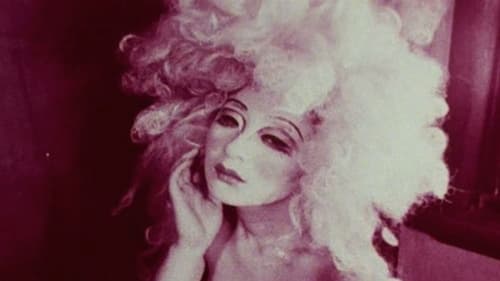
Editor
In a Japanese colony, children overthrow their parental guardians and attempt to form a new society. Their plan spirals out of control and they are soon lost in a web of sexual deviation and violence.

Music
In a Japanese colony, children overthrow their parental guardians and attempt to form a new society. Their plan spirals out of control and they are soon lost in a web of sexual deviation and violence.

Writer
In a Japanese colony, children overthrow their parental guardians and attempt to form a new society. Their plan spirals out of control and they are soon lost in a web of sexual deviation and violence.

Director
In a Japanese colony, children overthrow their parental guardians and attempt to form a new society. Their plan spirals out of control and they are soon lost in a web of sexual deviation and violence.

Writer
An outlaw pushes the residents of Edo's red light district to rebel against a growing number of stifling, moralistic laws.

Writer
A teenage goldsmith with a dark past tragically falls in love with a young nude model.

Poem
Documentary about the relationships between mothers and their children.

Imura
Easily bored, but still innocent and naive countryside girl (Mako Midori) discovers partying in Tokyo is a ton of fun. Yakuza-to-be (Ichiro Araki) is an acquaintance who tries to rape her, and the typically bland but very-good-here (Hayato Tani) the first boyfriend. Director Yasuo Furuhata (his first picture) lets his camera roll in trendy clubs amongst partying youngsters in a way that could've been out of 60s England or a Nikkatsu film if it wasn't shadowed by dated 60s Toei conservatism.The resulting film is a bit confused, either a rebellious youth tale chained by moral concerns, or something conceived as a morality tale trying to break free from its chains.

Screenplay
Takashi Fujiki stars as a rebel in this drama about life on the Yokohama waterfront by New Wave director Masahiro Shinoda. The rebel works as an errand boy for a shipping company and vents his frustrations by plucking on the guitar. His interpretations of popular trends in music are sometimes right-on, and sometimes not exactly. Bereft of his guitar, the rebel's modes of expression are not as effective in generating interest as the Yokohama docks themselves, a fascinating world in their own right.

Screenplay
Finished shooting in 1962, the movie’s cast was almost the same as its crew. With a bunch of experimental symbols such as skinny human body, clock and goat flow from one scene to another, the film explores the question of whether a man is a prisoner of time.

Director
Finished shooting in 1962, the movie’s cast was almost the same as its crew. With a bunch of experimental symbols such as skinny human body, clock and goat flow from one scene to another, the film explores the question of whether a man is a prisoner of time.

Screenplay
Ishihara Kiyoshi plans to marry the woman he loves, Chiee, a coffee shop girl. After an accident, Chiee loses her memory. A romance movie whose original work by Ayako Sono was made into a melodrama by a combination of Shinoda Masahiro and Terayama Shuji.

Writer
Eye-popping visuals and black humor mark this wild New Wave masterpiece about a vengeful contractor who hires a series of young killers to target a woman muckraker. Trouble brews when an amateur marksman shows up his eclectic competition.

Screenplay
Gang of robbers quarrel about the loot, but when one of them gets killed, his younger brother seeks them out to ice them one by one.

Screenplay
A reckless student contemplates terrorism in a prescient film that confirmed Shinoda as a fearless member of Shochiku’s iconoclastic New Wave. At the height of student protests, Shimojo (Shinichiro Mikami) takes his aggressions to another level, beset by seemingly insoluble feelings of alienation.























